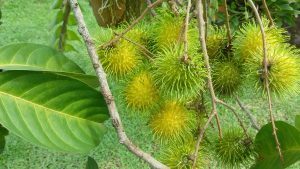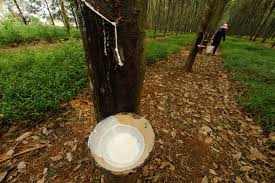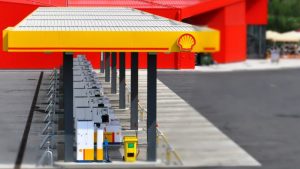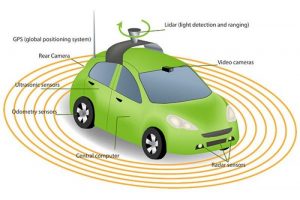Robots versus Conventional Vacuum Cleaners
Posted onBackground
This article is one of a series of articles on how certain industries and products are upended by new entrants outside of the existing industries. This article will focus on vacuum cleaners which are now replaced by robots.
History of Vacuum Cleaners
Every house will have a vacuum cleaner which cleans dirt and dust from every corner and surface. Vacuuming a house is a major chore that my wife would like to avoid as we have seven cats living together with us.
Vacuum cleaners are electrical appliances that use an air pump to suck up dirt and dust from floors and other surfaces. The dust and dirt are collected in a bag that can be emptied later. As electrical appliances, vacuum cleaners are sold by well known companies such as Samsung, Philips, Panasonic and Electrolux.
The first technology that led to the development of vacuum cleaners occurred in Chicago in 1868 by Ives W. McGaffey. His first -hand held vacuum cleaner was manually-powered by cranking it while it was being pushed along. The first vacuum cleaner that resembled today’s vacuum cleaners was created in 1905 by Walter Griffiths. It was still a manual appliance. However, it was much smaller and portable, which made it easier for one person to operate it. The appliance consisted of a bellow that would suck dust into a removable pipe. The pipe would be cleaned for next use. It also had differently-shaped attachments so that a housewife could reach other areas of the house that needed cleaning.
In 1908, James Murray Sprangler was awarded a patent for his vacuum technology that involved a rotating brush coupled with an electric vacuuming machine. He sold his idea to the Hoover Harness and Leather Factory, a company based in North Canton, Ohio. It made several improvements and models on the idea.
The Story of Hoover Vacuum Cleaners
Like Colgate Palmolive in toothpaste, Hoover was synonymous with vacuum cleaners.The emerging car business was seriously threatening the future of horse collars. The owner of Hoover Harness and Leather Factory, William Henry Hoover, was looking to expand his company. On a hot summer day in 1908, Hoover met James Murray Sprangler on his front porch to discuss a cleaning contraption that Sprangler had sold to his cousin, who was also his wife.
Vacuum cleaners were a boon to sanitation and health in the early 1900s but they were cumbersome and required two people to operate. Sprangler was an aging, sometime inventor working as a janitor to clear his debts. He developed a portable cleaning device to minimize dust that rose from the carpets he cleaned every night.
Sprangler attached an electric fan motor atop a soap box and sealed the cracks with adhesive tape. A pillow case billowing out the back served as a dust bag. Hoover and his wife were both impressed with the new machine but not many homes then had electricity in 1908.
Hoover bought the patents anyway and started the Electric Suction Sweeper Company. He set aside a corner of his leather goods factory for the production of suction sweepers, turning six cleaners a day. James Sprangler, with his debts relieved, became Hoover’s superintendent of production.
The first Hoover advertisement appeared in the newspaper, The Saturday Evening Post, on 5th, December 1908. The ad described the simple premise of the suction sweeper: “A rapidly evolving brush loosens the dust which is sucked back into the dirt bag.” The ad went on to further state that “Repairs and adjustments are not necessary.” Finally, readers were offered a free ten-day trial at home.
Hundreds of housewives took Hoover up his offer. He shipped the suction sweepers through local dealers who received a commission if the cleaner was purchased. If not, the dealer could keep the vacuum cleaner for in-store demonstrations. Thus, he began the national network of loyal Hoover dealers in the US.
Hoover then organized an army of door-to-door demonstrators. The sales power of the skilled demonstration was Hoover’s secret weapon. No one could deny that his portable vacuum cleaner was effective and time-saving. Research and innovation followed. In 1926, Hoover patented an agitator bar which beat the carpet before brushing it. When he died in 1932, Hoover vacuum cleaners were established as the American Standard for cleaning. In 1952, the company introduced the “Hoover Constellation”. This model hovered above the floor as it cleaned the floor. This model is still found in many American.
Today this famous company is part of the appliance giant, Maytag Corporation.
The Entry of Robot into Household Cleaning
Cleaning a house of dirt and dust is such a chore that inventors are developing robots to replace housewives to operate vacuum cleaners. Enter the robotic vacuum cleaner, which was introduced in 2002. These robotic vacuum cleaners were small and roamed around the house, sucking up dust and dirt. Detectors helped these robotic vacuum cleaners avoid bumping into things. The most popular robotic vacuum cleaner is the Roomba, which is marketed by iRobot Corporation, a company based in Boston, USA. It was founded by three MIT graduates who designed robots for space exploration and military defense. The initial Roomba has been updated with new features to allow it to become an advanced robot that cleans the floor efficiently.

iRobot Corporation is late entrant to the vacuum cleaner industry, and it has overtaken the traditional appliance companies in the household cleaning sector. Although the robotic vacuum cleaners are more expensive than the conventional hand-held vacuum cleaners, they have innovative features that make floor cleaning a hassle-free activity. The robotic cleaners are expected to become cheaper and having more features as technical advances are made in mapping and navigation.
The robotic cleaning industry is upending a sector that has been dominated by the appliance industry. The traditional appliance companies are also introducing their own robotic cleaners. However, they need to acquire new know-how in advanced technologies such as navigation, mapping and artificial intelligence. At the same time, more robotic companies would be entering the household cleaning sector with more intelligent robots.
Acknowledgement:
We would like to thank my DBA students, Dr Tamil, Dr Pang and Dr Justin, for providing initial information for this blog. (more…)












